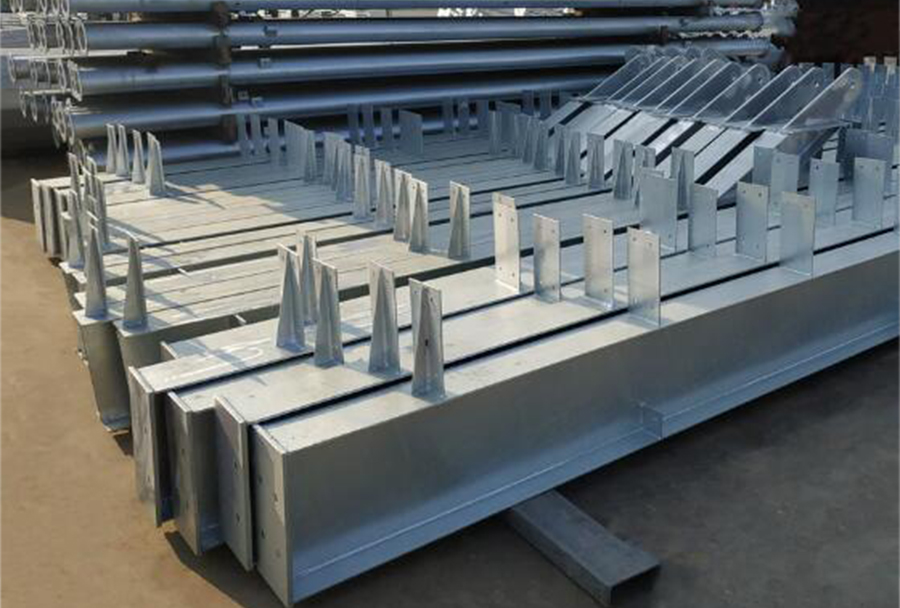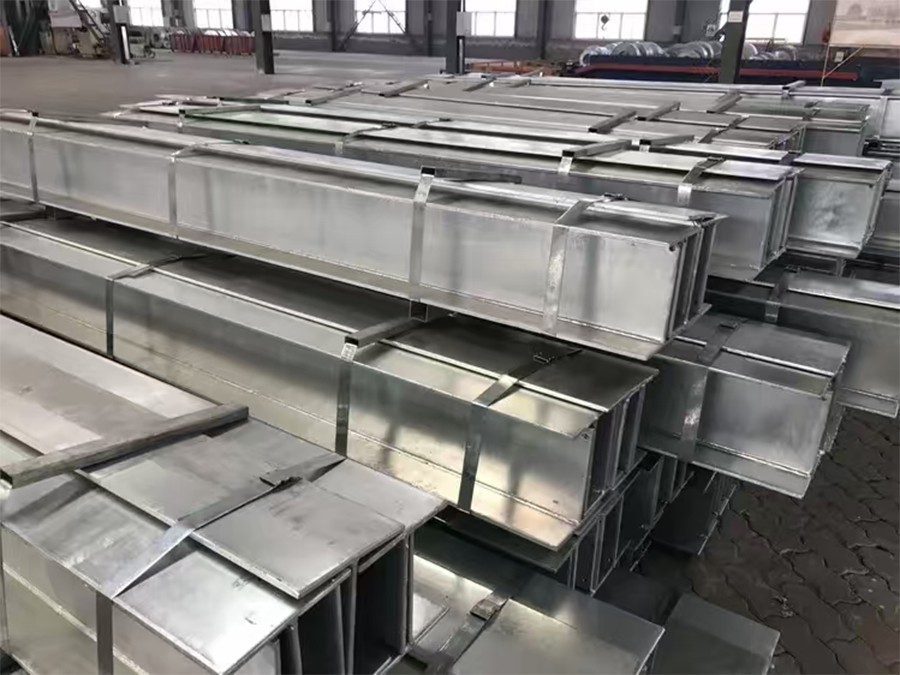Na indústria da construção moderna, o uso de estruturas de aço galvanizado por imersão a quente tem se tornado cada vez mais comum. Esse processo envolve o revestimento da superfície do aço com uma camada de zinco, proporcionando excepcional resistência à corrosão, prolongando a vida útil da edificação e reduzindo os custos de manutenção.

O que é estrutura de aço galvanizado a quente ?
Galvanizado a quente estruturas de aço são produzidos pela imersão de estruturas de aço em zinco fundido por meio de um processo de imersão em alta temperatura, que forma uma camada protetora de zinco. Esse método previne eficazmente a corrosão e prolonga significativamente a vida útil das edificações.

Quais são as vantagens das estruturas de aço galvanizado a quente?
☆Excelente resistência à corrosão
O zinco atua como uma barreira e uma camada de sacrifício. Mesmo que a superfície seja arranhada, o zinco corrói primeiro, protegendo o aço subjacente.
☆Vida útil estendida
Estruturas de aço galvanizado podem durar 50 anos ou mais em muitos ambientes sem grandes reparos ou substituições, o que as torna uma solução econômica durante todo o ciclo de vida de um edifício.
☆Baixos requisitos de manutenção
Em comparação com revestimentos pintados, os revestimentos de zinco galvanizado quase não exigem manutenção, reduzindo significativamente as interrupções operacionais e os orçamentos de manutenção.
☆Cobertura completa
O processo de galvanização a quente protege todas as superfícies, incluindo áreas de difícil acesso, como bordas, soldas e cavidades internas.
☆Sustentabilidade e Reciclabilidade
Tanto o zinco quanto o aço são totalmente recicláveis sem perda de qualidade, alinhando-se aos padrões de construção sustentável e reduzindo o impacto ambiental.
Qual é a aplicação das estruturas de aço galvanizado a quente?
Estruturas de aço galvanizado a quente são amplamente utilizadas em vários setores devido à sua durabilidade e resistência a danos ambientais.
Estruturas de aço galvanizado a quente oferecem durabilidade e resistência à corrosão excepcionais em diversas aplicações. São amplamente utilizadas em edifícios industriais, armazéns e instalações agrícolas devido à sua capacidade de resistir a condições adversas, como umidade, produtos químicos e intempéries de longo prazo. Além disso, desempenham funções críticas em infraestruturas como pontes, torres de comunicação e estruturas costeiras, proporcionando confiabilidade a longo prazo com manutenção mínima, ao mesmo tempo que resistem a desafios ambientais, como maresia e uso intenso.
|
|
|
|
|
|
|
|
Em resumo, as estruturas de aço galvanizado a quente oferecem durabilidade incomparável, resistência superior à corrosão e manutenção mínima. Essas vantagens as tornam a solução de longo prazo preferida e econômica para projetos industriais, comerciais, agrícolas e de infraestrutura em todo o mundo.
anos de experiência
 serviço on-line
serviço on-line +86-592-6095031
+86-592-6095031 manager@yumisteel.com
manager@yumisteel.com Alina_Yuki
Alina_Yuki +8613559086380
+8613559086380 +8615860744964
+8615860744964